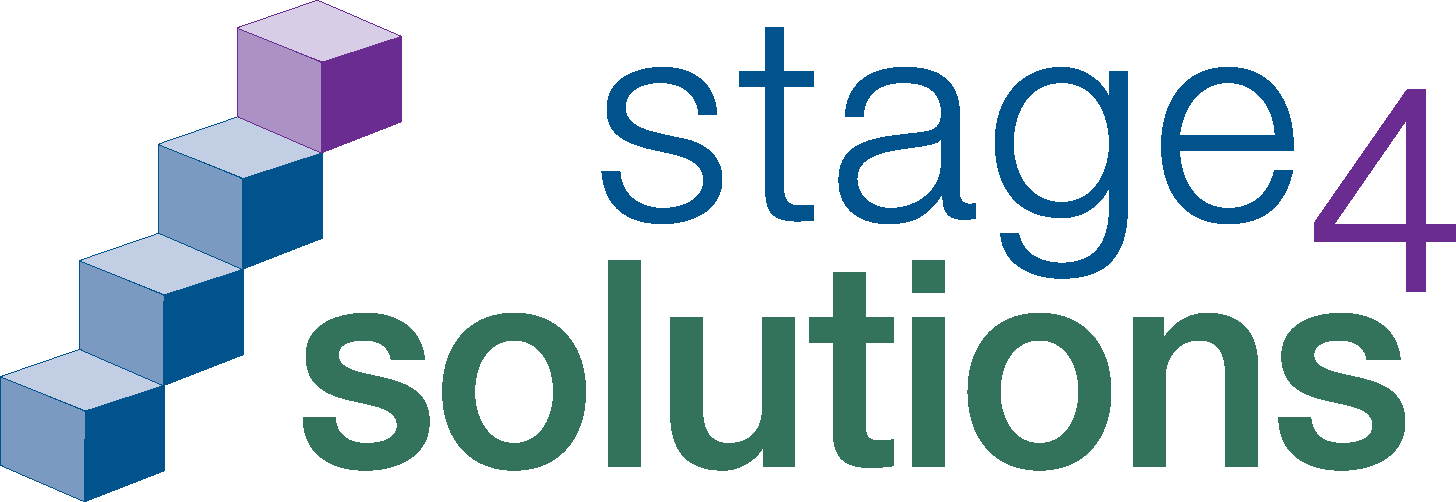Why AI Strategies Fail: The Execution Gap Between Vision and Results
- November 10, 2025
- Posted by: Stage 4 Solutions
- Category: Blog

In boardrooms across industries, the conversation about artificial intelligence (AI) has shifted from “if” to “how fast.” Yet beneath the momentum, a quiet truth is emerging: most AI strategies are failing. Despite billions of dollars invested and widespread executive optimism, few organizations can point to measurable business outcomes. The issue isn’t the technology; it’s execution.
The Illusion of Progress
A recent MIT study found that 95% of enterprise AI pilots fail to reach production. These failures rarely stem from model quality or computing power. Instead, they reflect organizations that haven’t adapted their processes to make AI work.
Most organizations misread early resistance to AI as failure, when in reality it exposes the process, data, and skill changes required for the technology to deliver value. The challenges that surface during implementation are not signs of dysfunction; rather, they are indicators of what must evolve. When systems clash with existing workflows, or when employees hesitate to rely on AI outputs, those moments reveal where governance is weak, where data quality is insufficient, and where roles or training need to change. The most successful organizations treat these tensions as diagnostic, not disruptive.
Most companies, however, do the opposite. They rush to make AI adoption appear effortless, deploying polished pilots that look impressive but fail when scaled to real operations, as organizations then face compliance hurdles, inconsistent data, and unclear ownership. The result is what MIT describes as “high adoption, low transformation”: broad experimentation without structural change. Real value creation happens when organizations slow down enough to understand those operational pain points and identify gaps in skills and training.
Strategy Without Execution Capacity: Why It Keeps Happening and How to Fix It
This failure pattern echoes a broader trend identified by PwC, which found that only about 30% of executives believe their company has a well-defined strategy, and fewer than 20% say there is organizational agreement on which capabilities matter most. Leaders are chasing short-term performance, launching multiple initiatives without building the foundational skills and systems required to sustain them. The result is what PwC calls the “strategy crisis,” a widening gap between intent and execution that leaves even the most well-funded programs struggling to deliver results.
Harvard Business School’s research on strategy execution mirrors this finding, estimating that over 90% of strategic plans fail, largely due to misaligned resources, vague accountability, and inadequate talent readiness. Many organizations underestimate the human dimension of transformation: who will manage the new workflows, verify outputs, or retrain staff to work alongside AI systems? When those questions go unanswered, even the best-designed strategies stall. AI implementation demands a new business process that defines clear ownership of AI-assisted decisions, redesigns handoffs between humans and systems, and integrates validation steps to ensure quality and accountability. This isn’t an IT upgrade; it’s an operational redesign that must be planned and led with precision.
To move beyond this execution gap, organizations need to combine strategic clarity with disciplined implementation. Four actions consistently distinguish those that turn AI ambition into business performance:
- Redesign for ownership. Define who is accountable for AI-assisted decisions and how oversight occurs. Clear ownership ensures accountability, prevents diffusion of responsibility, and enables faster course correction when models drift or processes fail.
- Build adaptive workflows. Treat AI integration as an ongoing redesign of how work is done, not a one-time rollout. Map where human validation, data governance, and feedback loops belong in each process before scaling, so systems can learn and improve continuously.
- Invest in bridge roles. Transformation succeeds when professionals who understand both technology and business objectives bridge the gap between data teams and operational leaders. These roles bridge strategy and execution, turning abstract AI goals into actionable steps and aligning day-to-day delivery with strategic intent.
- Measure adoption quality, not quantity. Success is not measured by how many tools are deployed, but by whether decision speed, accuracy, and outcomes improve. Organizations that track workflow impact and learning velocity, not just user counts, capture sustainable ROI.
Closing the Execution Gap
For most organizations, the missing ingredient in AI success isn’t another model or platform. It is execution capacity: having the right people in the right roles at the right time to carry transformation from concept to completion. Without them, AI remains a strategy that is well-funded, well-intended, and ultimately unrealized.
At Stage 4 Solutions, we help organizations overcome this deficit by providing rapid access to specialized, results-ready professionals who can translate AI visions into operational performance. Our team members embed within client environments to strengthen delivery capacity, accelerate workflow redesign, and ensure measurable outcomes.
The next phase of AI adoption won’t be won by the companies with the largest budgets or the most advanced models. It will be won by those who align people, process, and purpose. Technology may accelerate possibilities, but people turn possibilities into performance.
We’d love to hear how your organization is bridging the gap between AI strategy and execution. Please share with us.

